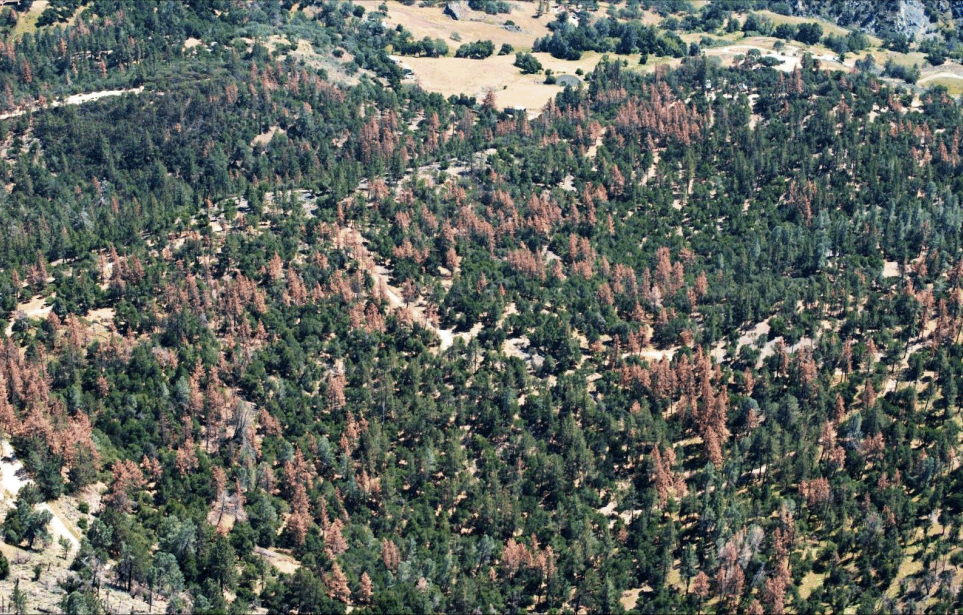
At least 12.5 million trees have died in California’s national forests after four years of drought, the Los Angeles Times reported on Tuesday. That’s a huge portion of California’s geography: The dead trees covered about 12 percent of the forested land that the United States Forest Service surveyed. The last time scientists noticed such a large number of trees dying was in the 1970s, when a multi-year drought killed off an estimated 14 million trees.
What happens to trees as the soil dries up beneath them? Scientists have studied this for decades, documenting the myriad, small ways that trees—especially the pine species of Southern California—respond to drought. Not all the reactions are necessarily lethal though; California’s native tree species evolved alongside periodic droughts. Nonetheless, severe droughts are dangerous for trees, because it’s not just about dehydrating. Dry conditions make trees more susceptible to other ills, including ones introduced by human activity, such as non-native pest species and air pollution.
Here are a few insights into how a drought feels to a tree:
- During drier times, ponderosa pine needles don’t take up as much carbon dioxide as they do during wet times. That means they’re taking up less of the carbon they need to grow, which translates to less of the air’s carbon dioxide being cleaned by the trees.
- Without enough water, pine trees don’t exude lots of sticky resin, which helps discourage pests from preying on them. As a result, drought-stressed pine trees are more susceptible to infection from pests, like bark beetles.
- Severe drought can alter the chemical make-up of pine trees’ resin.
- Dry conditions make trees draw up air bubbles in their xylem, the “veins” that carry water through their trunks and branches. Enough air bubbles can kill a tree.
- Studies conducted in the late 1980s suggested that wet soil conditions help Southern Californian pine trees recover from the ill effects of smog, which can damage the photosynthesizing cells in the trees’ needles, giving the needles a mottled look.

Drought affects many aspects of tree physiology, making what scientists call “drought stress” indeed an overall stressful experience.




